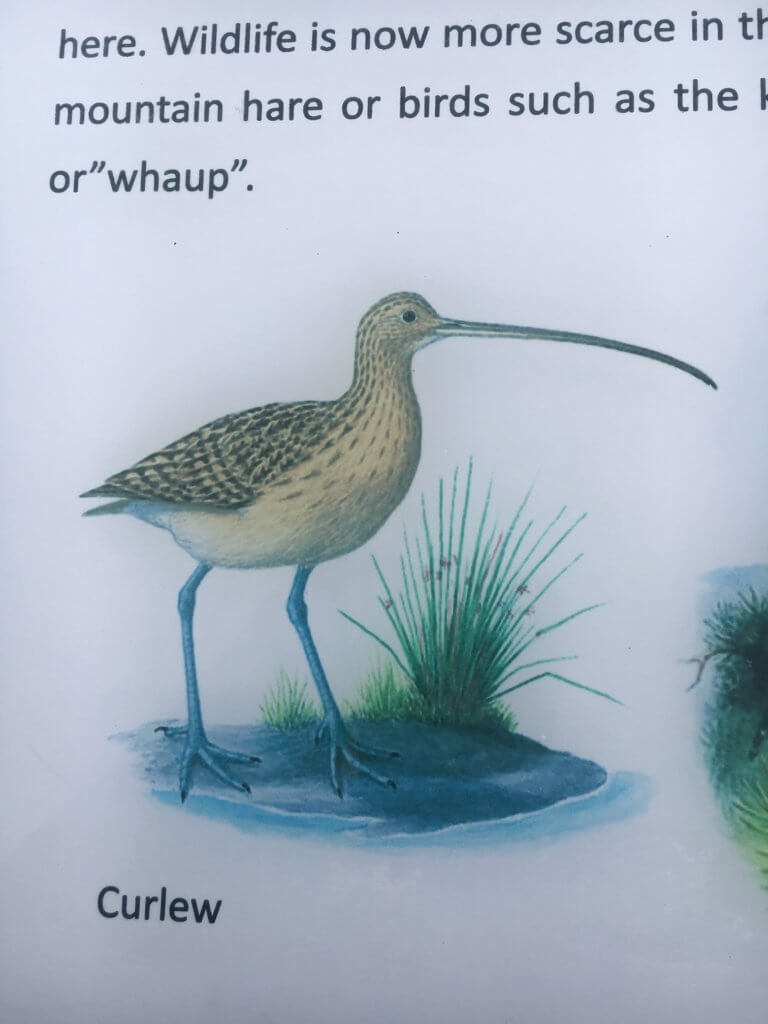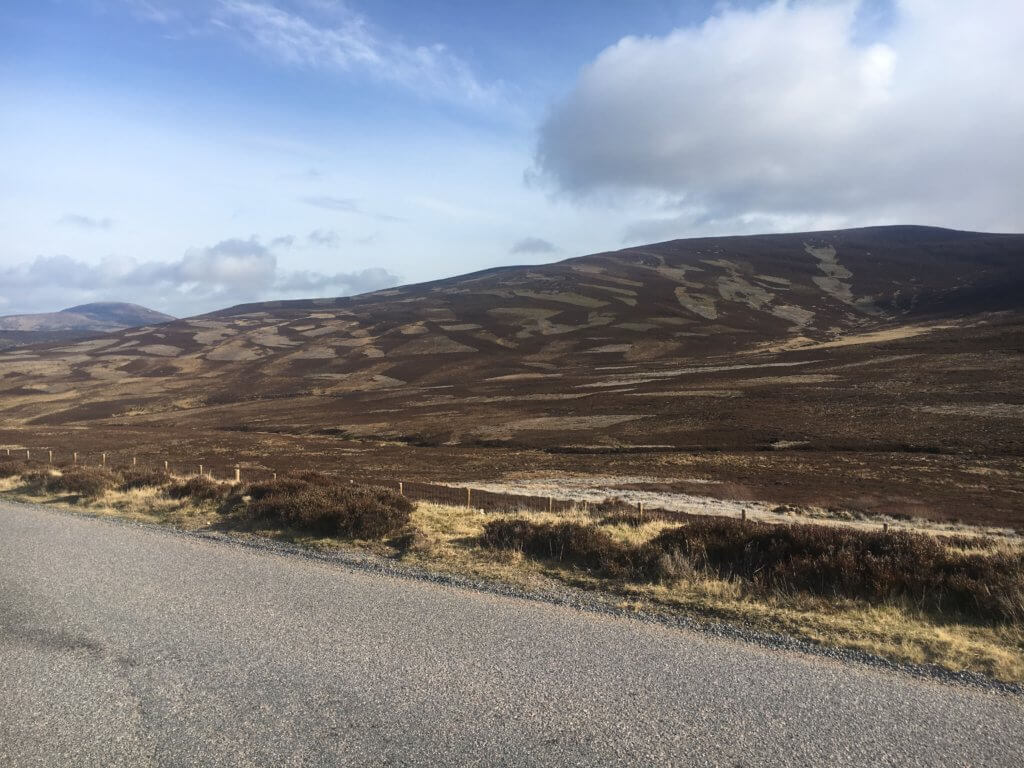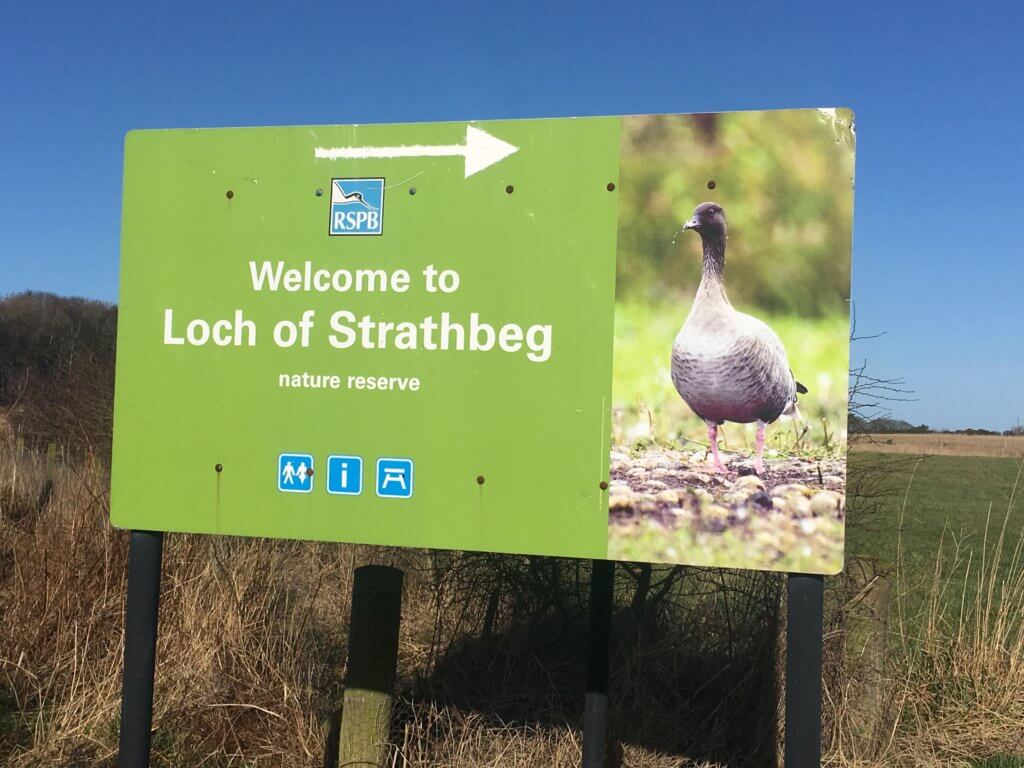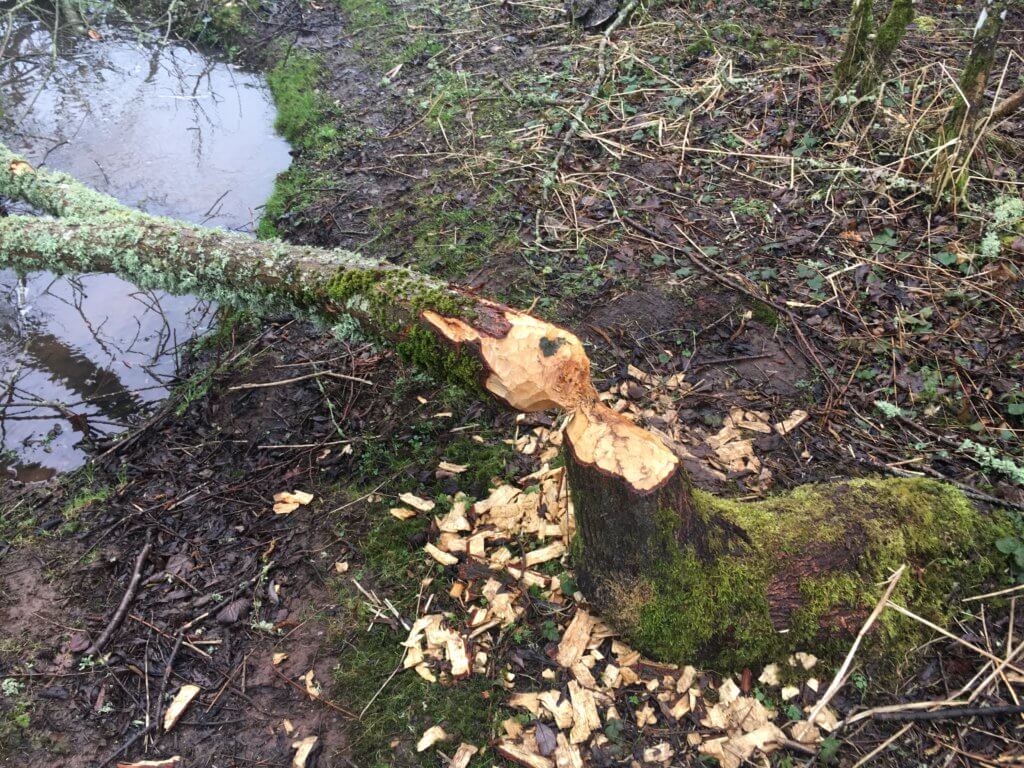
… where the Curlew have very long bills …

Not much wildlife here…

… but lots here …

… and just seeing these gnawed trees was an enormous treat and excitement.

Standing up for Nature

… where the Curlew have very long bills …

Not much wildlife here…

… but lots here …

… and just seeing these gnawed trees was an enormous treat and excitement.

Comments are closed.
Suggest if you’ve got the time and energy Mark coming up to Scotland and spending some time in the wonderful Angus Glens. We have a wealth of moorland biodiversity all contained within managed grouse moors. Waders, ring ouxel, merlins, etc still flourish because of moorland management and predator control. Also suggest you and your readers perhaps have a quick look at the following blog to give people a flavour and inspiration of what they are missing? https://davidadamsketchbook.blogspot.com/2019/03/the-meeting.html?fbclid=IwAR3E-0t6Jc4dgaBU_3krmyTvxQiI2Eh1dd09en7emJgVGAHzSor0IE77z0c
How do you make sure your snares don’t catch non target species? And how do you explain the long list of incidents below. What happened to the tags that stopped transmitting, and why has so much poison bait been found in that area? It looks as if there’d be lots more predators/raptors and probably passerines too if gamekeepers weren’t doing so much predator (and obvious bycatch) control.
And just imagine how much more prolific and diverse the wildlife might be WITHOUT the ‘management and predator control’ !
I’ve managed to see Beaver in two countries ( Poland and Sweden) and sign in another ( Finland) and have a not so little chip out of a large Aspen felled in Sweden found before I had seen one at all and yes very exciting.
Not so exciting it is 13:00 and I have just seen a fox and interrupted it stalking a less than a week old lamb on our neighbours field. My partner also saw a fox earlier this morning uncomfortably close to our free range chickens. On both occasions the fox left in a hurry with our border collie Maisy in hot pursuit, needless to say she has little chance of overhauling it. We are however going to need to be vigilant and talk to our neighbouring farmer.
I suppose the dislikes are because our dog chased the fox or our neighbour might shoot it, he won’t but the game keeper who I detest may if the fox is a nuisance. I don’t want the fox to die but nor do I want us to lose any chickens or our neighbour, who is an old school friend of my partners daughter, to lose any lambs. they struggle as it is to make a living. There are hordes of pheasants for the fox to catch and it will be safe if it stays on the nature reserve that almost surrounds us. I suspect there are cubs uncomfortably close but live and let live, I may even set up the trail camera if I find them but I’d rather not be feeding them our chickens. Maisy she was just having fun, she chases pheasants for fun too but is very very well behaved with sheep and grand children.
“2004 May, near Edzell: long-eared owl and two short-eared owls starved to death in crow cage trap. No prosecution.
2004 May, Invermark Estate: peregrine nest destroyed. No prosecution.
2006 March, Glenogil Estate: poisoned rabbit bait (Carbofuran). No prosecution.
2006 April, Easter Ogil: poisoned buzzard (Alphachloralose). No prosecution.
2006 April, Easter Ogil: poisoned tawny owl (Alphachloralose). No prosecution.
2006 May, Glenogil Estate: poisoned rabbit bait (Carbofuran). No prosecution.
2006 June, Glenogil Estate: poisoned woodpigeon bait (Carbofuran). No prosecution.
2006 June, Glenogil Estate: Traces of Carbofuran found in estate vehicles & on equipment during police search. No prosecution. Estate owner had £107k withdrawn from his farm subsidy payments. This was being appealed, but it is not known how this was resolved.
2006 July, Millden Estate; poisoned sheepdog (Lindane). No prosecution.
2007 November, Glenogil Estate: Disappearance of radio-tagged white-tailed eagle ‘Bird N’ coincides with tip off to police that bird allegedly been shot. No further transmissions or sightings of the bird.
2008 May, ‘Nr Noranside’: poisoned white-tailed eagle ‘White G’ (Carbofuran, Isophenfos, Bendiocarb). No prosecution.
2008 May, ‘Nr Noranside’: poisoned buzzard (Bendiocarb). No prosecution.
2008 May, ‘Nr Noranside’: poisoned mountain hare bait (Carbofuran, Isophenfos, Bendiocarb). No prosecution.
2008 May, Glenogil Estate: 32 x poisoned meat baits on fenceposts (Carbofuran, Isophenfos, Bendiocarb). No prosecution.
2008 October, ‘Glenogil Estate: poisoned meat bait on fencepost (Carbofuran). No prosecution.
2009 March, Glenogil Estate: poisoned buzzard (Carbofuran). No prosecution.
2009 March, Glenogil Estate: poisoned buzzard (Carbofuran). No prosecution.
2009 April, Millden Estate: poisoned buzzard (Alphachloralose). No prosecution.
2009 July, Millden Estate: poisoned golden eagle ‘Alma’ (Carbofuran). No prosecution.
2009 August, Glenogil Estate: poisoned white-tailed eagle “89” (Carbofuran). No prosecution.
2010 May, ‘Nr Noranside’: poisoned red kite (Carbofuran). No prosecution.
2010 September, Glenogil Estate: poisoned buzzard (Chloralose). No prosecution.
2010 October, Glenogil Estate: poisoned buzzard (Carbofuran). No prosecution.
2010 October, Glenogil Estate: poisoned pigeon bait (Carbofuran). No prosecution.
2010 October, Glenogil Estate: poisoned pigeon bait (Carbofuran). No prosecution.
2011 February, Airlie Estate: buzzard caught in illegal crow trap. (see below)
2011 March, Airlie Estate: 3 x buzzard caught in illegal crow trap. Prosecution (!) but dropped after statement from suspect given to SSPCA deemed inadmissible.
2011 April, Millden Estate: shot buzzard. No prosecution.
2012 April, ‘Nr Noranside’: Remains of buzzard found beside pheasant pen. Suspicious death.
2011 June, Rottal & Tarabuckle Estate: dead kestrel inside crow cage trap. No prosecution.
2012 February, ‘Nr Edzell’: spring-trapped buzzard. No prosecution.
2012 February, ‘Nr Bridgend’: remains of buzzard found under a rock. Suspicious death.
2012 May, Millden Estate: satellite-tagged golden eagle seemingly caught in spring trap, then apparently uplifted overnight and dumped on Deeside with two broken legs & left to die. No prosecution.
2012 May, Glen Esk: disappearance of sat-tagged red kite. No further transmissions or sightings of bird.
2013 January, Invermark Estate: white-tailed eagle nest tree felled. No prosecution.
2013 June, Glen Ogil: shot buzzard. No prosecution.
2013 July, Glen Moy: illegal hawk trap. No prosecution.
2013 September, nr Edzell: unset spring trap next to bait. No prosecution.
2013 November, Glen Lethnot: poisoned golden eagle ‘Fearnan’. No prosecution.
2014 August & September, Glenogil Estate: alleged snaring offences. Prosecution dropped.
2014 October, Nathro: shot buzzard. No prosecution.
2015 July, Brewland Estate: illegal pole trap. Prosecution dropped.
2017 October, Angus Glens grouse moor: alleged suspicious incident (details not public), ongoing investigation
2018 March, Angus Glens grouse moor: alleged suspicious incident (details not public), ongoing investigation
In addition to the above incidents, there hasn’t been a single successful hen harrier breeding attempt in the Angus Glens since 2006, and the area is also one of the areas identified as a hotspot for satellite-tagged golden eagles that have ‘disappeared’ in suspicious circumstances. In addition to the eagles that have ‘disappeared’ here, and the ones that have been found illegally poisoned or illegally trapped, a further golden eagle tag was found on a grouse moor here, “whose housing had been stabbed by a sharp implement and whose harness had been cut cleanly by a sharp instrument”, according to the golden eagle satellite tag review.”
Well done indeed Coop, Groves has long been an apologist for the criminality in the Angus Glens and it seems he may not be the only one. They should of course be challenged each time they put forward their jaundiced and untrue view of the world, wonder they can sleep at night.
Paul perhaps it’s about time that people like yourself actually listened to people like myself who live in Angus and have monitored raptors, etc for well over 20 years? I’ve witnessed first hand the change of attitudes, etc. What I write is the balanced truth gained by thousands of hours walking and exploring the Angus Glens. e.g. Over the last 2 years with a little help from gamekeepers I’ve managed to at least double the number of known breeding Merlin sites in Angus. Rather than was reported in a Lammermuirs publication in 2017 by the TRSG Merlin coordinator that this little raptor was decreasing, the complete opposite is actually true. It’s thriving due to reasonable habitat and plenty of prey. https://britishbirds.co.uk/article/population-breeding-biology-merlins-lammermuir-hills/
Thanks Paul, but I can’t claim any credit for the above list. I cribbed it from RPUK, and keep it for “special” occasions such as this.
Gladly things have very much moved forward progressively on the raptor persecution front over the last 5 years or so in Angus. Rather than regurgitating old historical data wouldn’t it be beneficial to move forward and recognise positive and progressive change of attitudes? Harriers are back breeding in Angus but unfortunately one of the adult birds seems to be infertile and eggs don’t hatch? As well as having around 5 or 6 resident breeding pairs of Golden Eagles the Angus Glens are a haven for young birds and is well recognised as a Temporary Settlement Area (TSA) for these young raptors due to high prey availability/density. As far as I can make out through personnel experience the Angus Glens are certainly a hotspot for faulty harness/satellite tags with at least 5 young birds seen over the last 7 years with various harrowing problems. In the review out of the 41 young golden eagles satellite tagged which ‘disappeared in suspicious circumstances’ around 25% of them vanished well away from any managed grouse moor interest e.g. Colonsay, Rum, etc. Coop if this satellite technology is so robust and trustworthy then why were none of these eagles ever pinpointed and recovered?
“Coop if this satellite technology is so robust and trustworthy then why were none of these eagles ever pinpointed and recovered?”
I suggest that you know full well why.
Coop – Perhaps the reason why none (including the 25% that disappeared on the Western Isles, etc) of these young golden eagles were never found was because their last GPS signal was so infrequent and eagles can fly a very long way in 11 hours, 59 minutes and 59 seconds? Typical satellite tag used in study:
105GPS – Microwave Telemetry Inc. 105 g (lithium) battery powered GPS transmitters (LC4 PTTs). Transmitters took 1 GPS fix per day at 12 noon and transmitted every 10 days. Transmitters were suggested at 2.5 years battery life by the manufacturer
As a retired senior scientist I;m totally puzzled by some of this very poor science in such a very small and limited study of only 131 birds. 5 different types/models (battery/solar power) of satellite tags used. 2 different harness systems. 8 different people wrapping various quantities of linen or cotton thread to keep this tag on.
What is extremely worrying is that out of the 5 different satellite tags used 2 accounted for nearly 75% of the missing eagles – 70GPS and 80NS. Was their a problem with these satellite tags?
I could go on and on but whats the point. Everyone is an expert. Although I would be most interested on your comments on any of the above Coop please.
As a self-proclaimed “retired scientist”, supposedly concerned about “poor science”, you have a strange fondness for speculation, as opposed to evidence.
Eggs don’t hatch because they have either been shaken or put in ice.
Nest camera was in place plus eggs were sent away for analysis.
As somebody who has worked with satellite technology on geese I KNOW how reliable, robust and trustworthy it is. When birds die or harnesses preened through because greylags can do that we found all the tags and birds. Some tags we couldn’t get back because they were in lakes or on /in silt beds but we found them. the reason eagles aren’t found is quite simple really, dead bird and damaged tag are immediately disposed of. I’m sure you know this!
Were this extensive region to be such a haven for raptors why have no harriers bred there for years? Forgetting the proportion of satellite tagged eagles that you claim disappeared away from the grouse moors , what happened to the other 30? How do you account for a satellite harness that showed signs of having been cut and satellites that stopped transmitting on grouse moors but without the birds or the tags being found? Are you aware that the bodies of birds of prey are often disposed of or hidden by gamekeepers and the tags destroyed to make it difficult for conservationists to prove the crimes committed against protected birds. Recent video evidence shows gamekeepers doing just that. I am surprised that your gamekeeper friends have not enlightened you on this aspect of their management of grouse moors. The fact that so much evidence of the persecution of raptors has been found up to the very time of my writing, in grouse moors throughout the Uk makes it difficult to believe your assertion that modern gamekeepers in the Glens have, uncharacteristically, turned over a new leaf. Finally you talk about grouse moors being attractive to young eagles and functoning as temporary settlement areas (TSA) . the tragedy of places like the Angus Glens where raptor persecution is rife is that they act as sinks for young birds, which are then killed illegally, drawing other birds in to fill vacant territory, many of which will in turn be illegally killed . THis can have serious consequences for regional and even national populations of raptors but also of course weasels stoats, mountain hares and any passerines, hedgehogs or amphibians that are killed by indiscriminate snares and traps.l.
Maybe the harrier eggs failed to hatch because someone put some ice cubes on them? How many hen harrier eggs fail to hatch on grouse moors compared to anywhere else, from a very small sample size for the former to begin with I imagine. Isn’t it strange that the Angus Glens seems to be the world capital of ‘place to get a picture of an eagle with a sat tag harness on the absolute verge of falling off’, looks as if the very next time the eagle drops its head the harness will tumble off. Must be an incredibly short window of opportunity to take such images, but they seem to manage it in the Angus Glens. Even if they’re genuine they demonstrate how well designed the harnesses are. The stitching on them is made to biodegrade at about five years of age when the battery expires (they also have built in weak spots so they’d break should any bird get caught up on an obstruction – to my knowledge no stationary signal has been traced back to a dead eagle caught up on a branch or in a cleft rock via harness). Although the harness has obviously not been a hindrance to a bird which has lived with one for five years there’s no point carrying a dead sat tag for longer than necessary so thereby the inbuilt dismantling process. However, if you don’t know this the sight of an eagle with a slipping harness looks very bad, a serious encumbrance when in fact it’s the process of ‘very slight encumbrance becoming total non encumbrance’. If pathetic, scurrilous individuals wanted to get such images to try and discredit genuine raptor workers how could it be done? I’m not a falconer, but I know there are some who are quite pally with the estates, including at least one with a golden eagle. Make a mock up(s) of a sat tag harness breaking up, or an actual one taken from a shot, trapped eagle, put it on a trained bird, remove it’s jesses, fly it and take images to your heart’s content. Would be good to know from an actual falconer how possible in reality this conjecture would be. I certainly believe if it’s possible then there are those twisted and desperate enough to try it. You just have to look at some of the pathetic sycophants the grouse moors have.
You probably don’t even need to take the jesses off they can be photoshopped out.
The technology seems to work perfectly well for Osprey studies!!
Did you go to Carrifran Wildwood on your way through the borders? It’s great.
A little unfair, to compare an equivalent area of any moorland, with Loch of Strathbeg, but point taken.
I have seen a number of Beaver in Poland, along with gnawed stumps, including a near two hundred
year old Beech tree destroyed, and a clump of mature Willow, that used to grace a stretch of river.
I don’t think that anyone has ever suggested that beavers don’t fell trees but there is plenty of evidence for their being considerable net gain in ecological terms from their activities. You can’t always say that about trees felled by humans.
What beavers do to trees they’ve been doing for millions of years and somehow forests and their wildlife thrived. After all beavers did some coppicing to stimulate ground flora, create dead wood ideal for hundreds of species of inverts and fungi and built wooden structures in the water that are ideal for aquatic life. Be sorry for all the magnificent beeches in the Carpathian mountains being turned into furniture, the old growth forest in Tasmania chipped to make cardboard and all those trees in Amazonia marked for the bulldozer and fire to create cattle ranches when the world is currently throwing away a third of its food. Then there are all the trees removed to make way for an angler’s casting – not changed as beavers do, but totally removed leaving a wildlife void. Will you be speaking up against that Trapit?
But I don’t want to see a weirdly skewed intensively managed habitat. I want to see a
Moor that has a diversity of structure, blanket bogs that function and biodiversity on a different scale. I don’t want a fire scarred desert. Biodiversity is a lot of different species not a lot of one species. The Angus Glen’s biodiversity interests survives despite grouse moor management rather than because of muirburn.
I am all in favour of widespread Beaver populations in the UK (we seem well on the way already), but
many people seem caught up on a wave of enthusiasm for all the environmental benefits it is hoped
they will provide, and I genuinely hope they are right.
I was just pointing out it will not just be a case of munching their way to a wildlife utopia, there will be
losers, as in all things.
The world’s forest’s have long been under threat, one of the reasons I have been a paid up member of
Greenpeace for around forty five years (to the derision of one of my former head – keepers), and as a
matter of interest I also signed your petition Les, so I do speak out on a number of issues.
Nobody claims there won’t be issues with returning beavers, but many of them will be resolved by wrapping a bit of chicken wire around any trees deemed too valuable to lose, we have massive deficit in terms of older trees so that I believe would be a worthwhile concession. But even if the beavers did get the specimen trees not a true loss in the way all those old hedgerow and field corner trees reduced to piles of logs for wood stoves are. Road and rail journeys through the countryside are pretty dispiriting these days if you don’t like seeing old trees cut down. Thanks for signing the petition, a new one on a Scottish Natural Flood Alleviation Strategy (with emphasis on use of beavers in this context) in the pipeline and the grouse economics petition is currently planned for a second run later in the year.
Hi Mike. You say things have improved a lot over the last 5 years and you have known the area very well for, what was it, 20 years? The situation must have been pretty bad for the first 15 years, and you must know quite a lot about that to be able to measure the change. Were you able at any point to use your extensive knowledge to help the police investigate those bad times?
Jim, huge experience having monitored harriers (Angus co-ordinator for many, many years) and merlins, etc in all this time. Helped Poilce with persecution cases but to be honest they were incompetent. Also spent time taking out WCO’s although they found the walking difficult and tiring and never got back in touch to go out again.
Without doubt looking back at historical data the worst estate listed above was Glen Ogil. Today with a changed owner, headkeeper, etc the transformation is dramatic. Ravens, Buzzards, Kestrel, Red Kites and Merlins galore. Osprey, Peregrine, SEO and a wealth of other moorland biodiversity.
Some people that have never even been in the Angus Glens thus have no experience pass judgement on the current situation which is totally unfair and wrong.
Angus should no longer be labelled as a ”hopspot for persecution”. Times have moved forward and surely this should be recognised as progressive change?
Thanks for the response, Mike. Are there any cases where I can check the details so as to understand for myself what can of contribution you have made? E.g. does your name appear anywhere in public annoncements by the police or other bodies or in publicly available documentation relating to specific cases? Also, have you made any official complaints about your experience of police incompetence? I would like to see how the police responded to such allegations. As I’m sure you would agree, without some sort of intervention I’d be rather worried that nothing on that side has changed; in your opinion have the local police response got worse, stayed the same, or improved during our time?